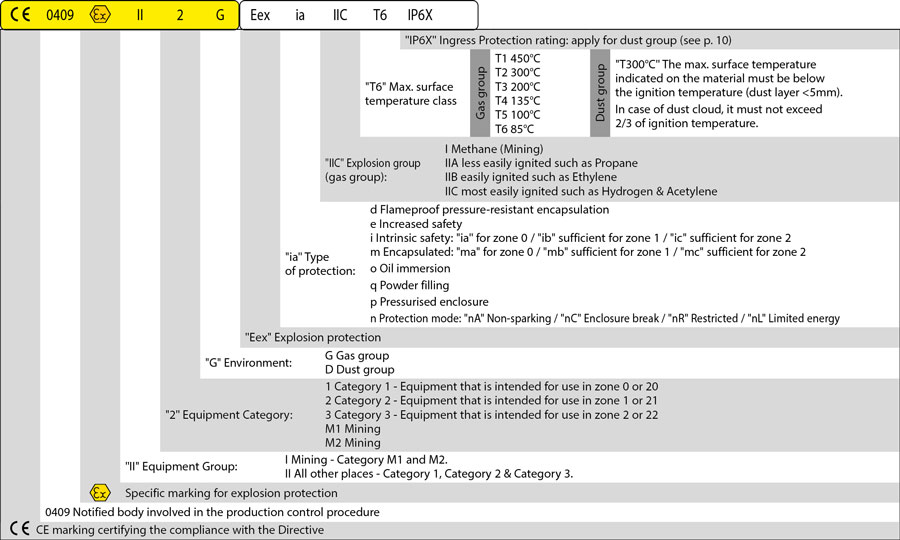Local Storage seems to be disabled in your browser.
For the best experience on our site, be sure to turn on Local Storage in your browser.
ATEX Directive (2014/34/EU)
Directive on equipment and protective systems intended for use in potentially explosive atmospheres (ATEX - ATmosphères EXplosibles). There are 2 ATEX Directives: Directive 2014/34/EU concerns equipment (products) and Directive 1999/92/EC relates to the minimum requirements for improving the safety and health protection of workers potentially at risk from explosive atmospheres.
Potential explosive atmospheres exist when air is mixed, under atmospheric conditions, with flammable substances in the form of gases, vapours, mists or clouds of dust which can entirely spread combustion when exposed to a source of ignition. The new 2014/34/EU Directive defines the obligations and responsibilities of importers (Art.8) and distributors (Art. 9). Moreover, the Directive establishes that every operator shall keep records of any supply of ATEX equipment for 10 years (Art. 11).
1 - About valves
The Directive (Art. 2, §1) and the "ATEX 2014/34/EU Guidelines" (§38) determine that equipment and simple piping elements such as
fittings, manual valves, non-return valves, strainers, pressure reducers, safety valves, steam traps… are out of the scope of the directive because they do not have their "own potential source of ignition". Therefore, they do not need certification to be installed in hazardous areas.
Only actuated valves (whether electric or pneumatic) and sight glasses (because of the mechanical resistance of their glass part) are subject to the ATEX Directive.
However, regarding manual valves and other simple piping elements, a risk analysis should be carried out to ensure the compatibility of the valve with the explosive environment. This involves, for example, ensuring that the electrostatic risk due to the plastic elements of a valve is eliminated.
2 - Zone classification
The Directive concerns gassy mines and surface industries for the two risk atmospheres:
presence of gas or presence of dust. It is up to the operator to define the zones in which an explosive atmosphere can occur using the following classification according to 1999/92/EC Directive:


| Gases | Dusts | Definition of zone |
| 0 | 20 | areas where an explosive atmosphere is expected to exist continuously or for long periods of time or more than 1000h/year |
| 1 | 21 | areas where an explosive atmosphere is expected to exist for short periods of time and less than 1000h/year |
| 2 | 22 | areas where an explosive atmosphere is not expected and if released, it will only exist for a very short period of time and less than 10h/year |
3 - ATEX marking - Example & explanation


